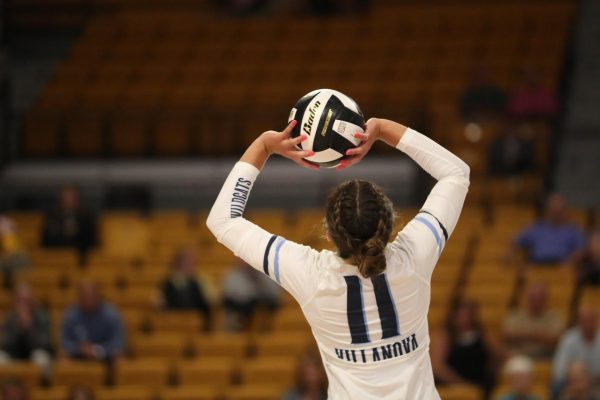College tuition keeps parents scrambling to catch up
September 25, 2003
As college tuitions across the nation continue to rise on a yearly basis, the United States Board of Education is looking to cap the tuition and fee increases at twice the rate of inflation on any given year.
Over the last decade the average tuition and fees at four-year colleges or universities have jumped about 75 percent as calculated by the College Board for the 2002-03 school year. With the College Affordability in Higher Education Act in the process of being passed by Congress, an institution that raises the cost by more than twice the rate of inflation will have to explain their reasoning to the College Board and submit a plan of reduction.
Students and parents are left to deal with dropping stock markets, raised inflation and an unstable economy as they plan their educational futures. Villanova University, a private institution, is no exception to trend.
For the 2003-04 academic school year, the complete tuition for a student in the Liberal Arts and Sciences College at Villanova will be $38,185. This includes room and board, a fee for the Health and Wellness Center, as well as books and supplies. The tuitions for the Colleges of Commerce and Finance and Engineering are slightly higher, coming in at $39,285 and $40,065 respectively. In both of these colleges the student is provided a laptop to be used while at Villanova.
“Many things remain the same at Villanova over the years – the basketball games, the volunteering spirit, the tradition,” Paul Winterhalter, class of ’80, said. “Though as a parent paying a ‘Nova tuition for a second generation, the price most certainly has changed.” In 1979, Winterhalter’s freshman year at Villanova, the tuition was $4,800. Over his four years at the school the tuition did see a hike but never rose above $10,000. Thirty years later Villanova is almost four times as expensive.
Price increases are not just happening in private colleges and universities. Penn State Main Campus in University Park, Pa., will also see a tuition increase next year as the price goes from $11,000 to $14,000 for in-state residents.
According to Villanova’s Office for Financial Aid, 94 percent of those applying for need-based aid were eligible to receive something. Eighty-eight percent received Villanova based grants averaging $10,830. The more income a family has, the less financial aid they will receive when applying for help. Another factor that plays a role in allotting money to families is the number of dependant children in the family, and also the number of children in college in a single year.
There are many ways a student can finance his college education, including loans, grants, scholarships and work-studies programs.
Many students, both at Villanova and other universities are eligible for a student work studies program. This is designed so the student works on campus part time and receives a paycheck which can then be used to help the financial costs of attending the University. At Villanova, the money received from the paycheck is not originally taken out of the student’s tuition.
“I am work study here at Villanova, and basically the paycheck helps me pay for my books and other small expenses I come across during the school year,” Julie Maeir, a senior biology major said. “I work in the Alumni Office, and while it can be hard balancing work hours and studying, it helps my parents out, who are paying for everything.”
While families across the nation are looking for relief from rising college costs, the government is continuously working on finding money to distribute and trying to pass bills to cap tuition. The last thing the nation wants is for college attendance to become such a novelty for future generations, not because of the competitive entrance but because of the inability to pay for it. Hopefully, with the newly proposed bill, future college applicants will get a breath of fresh air when planning their financial package.












